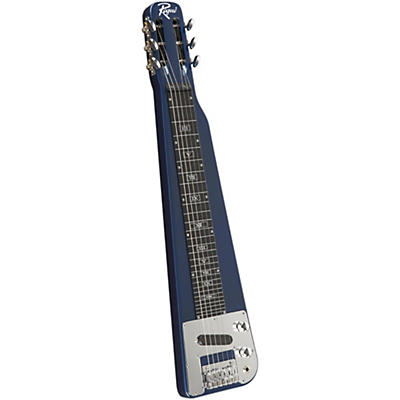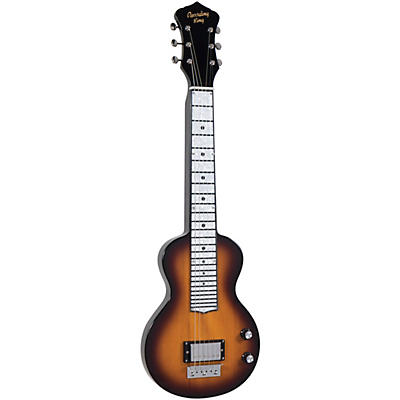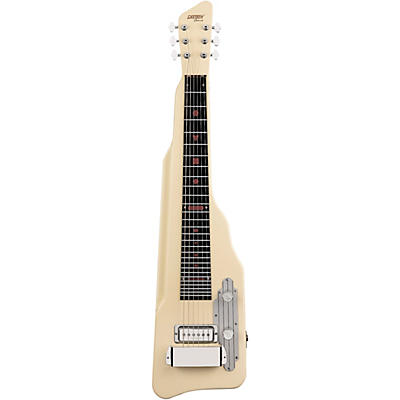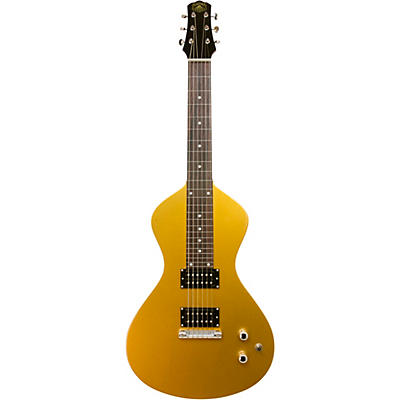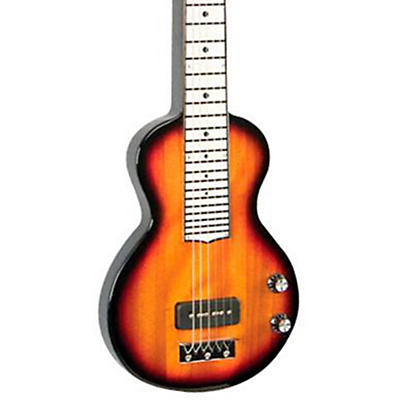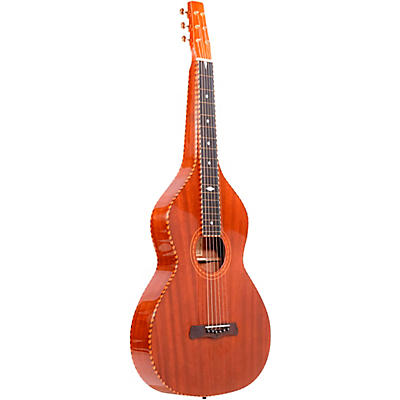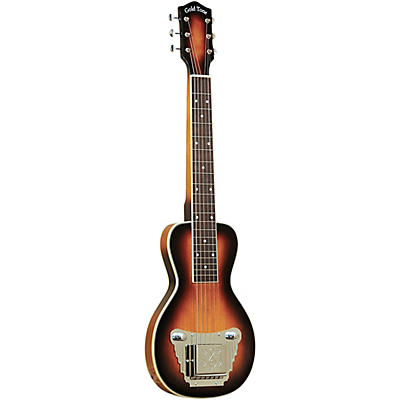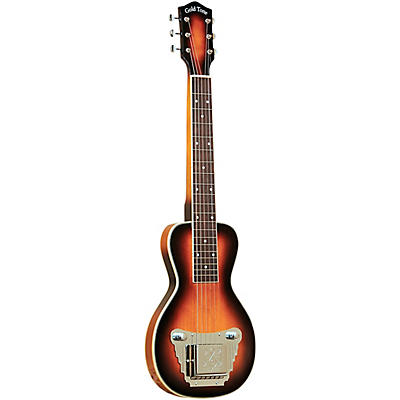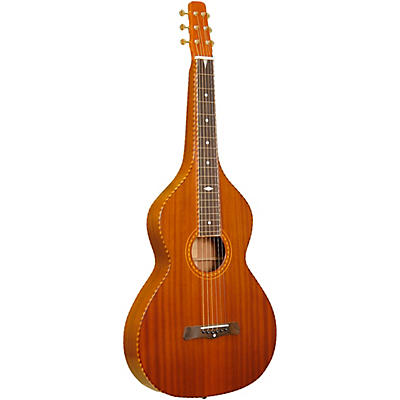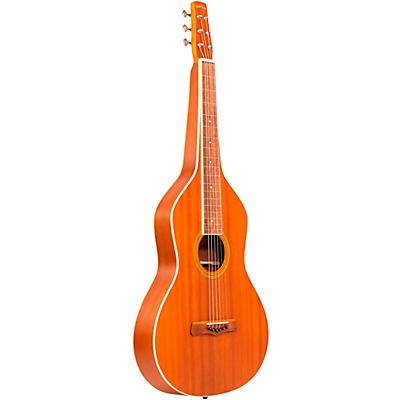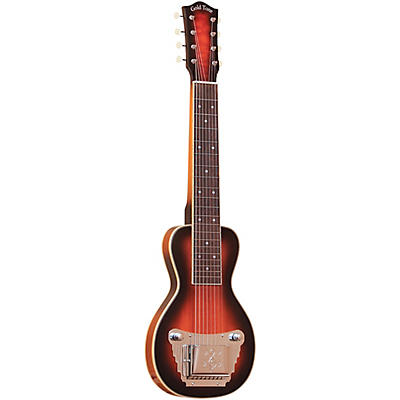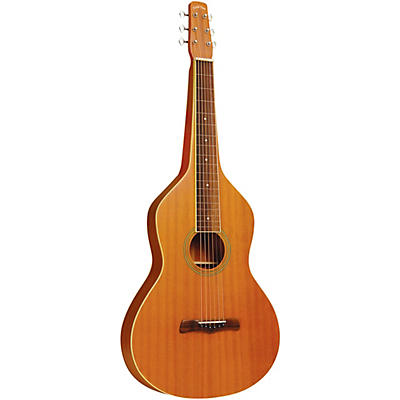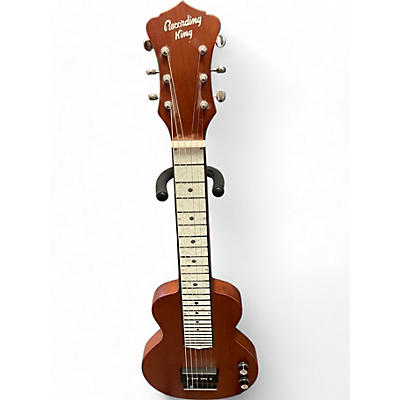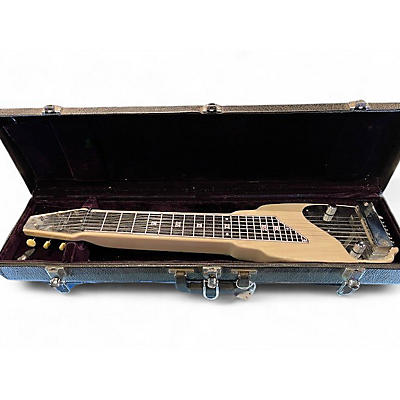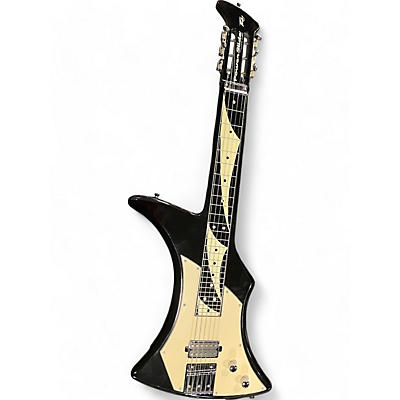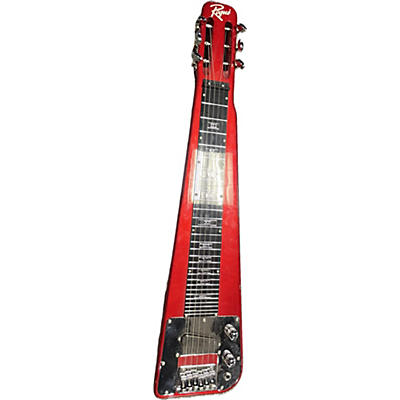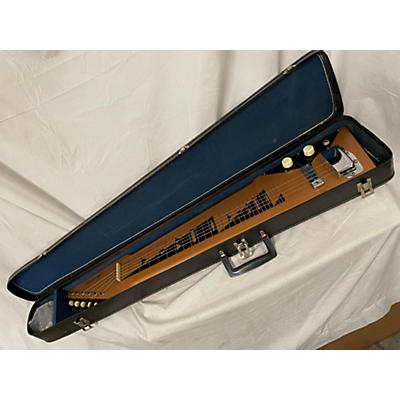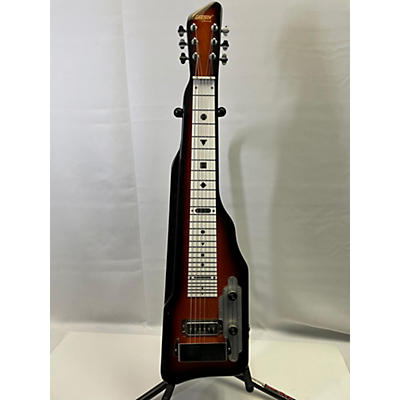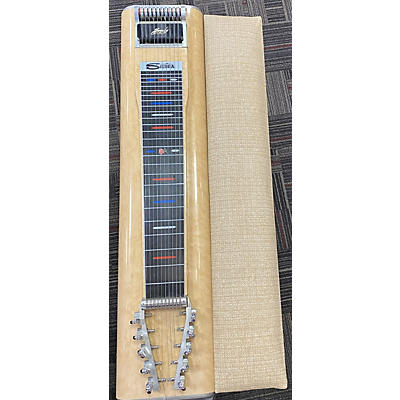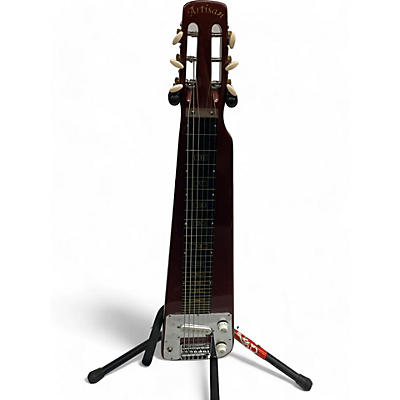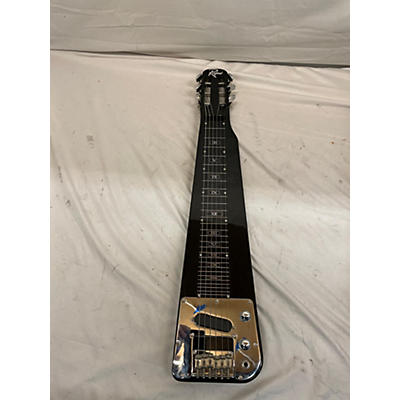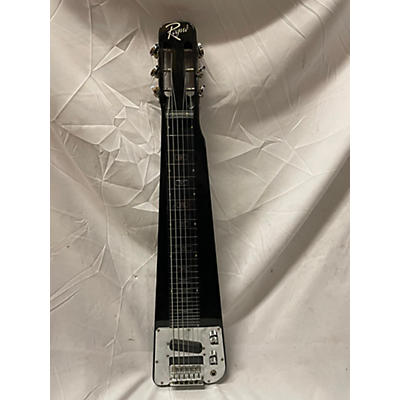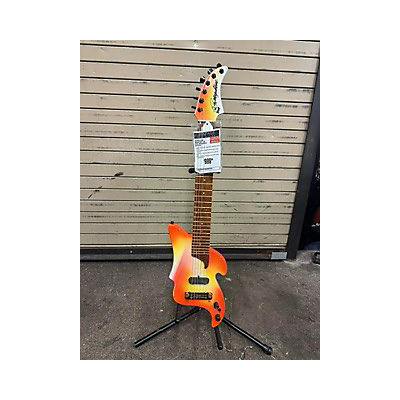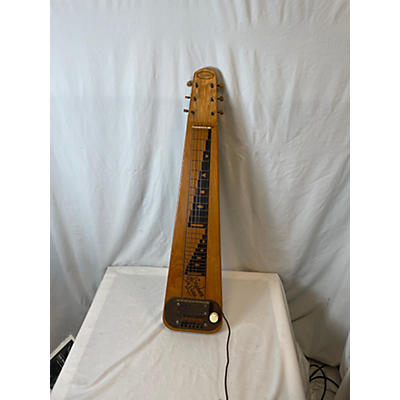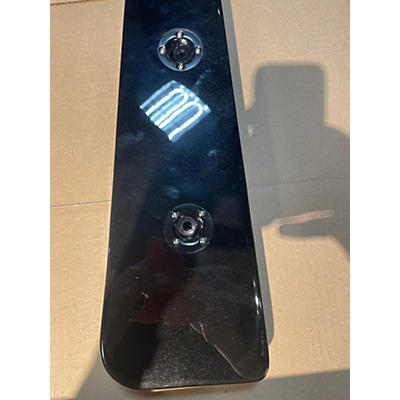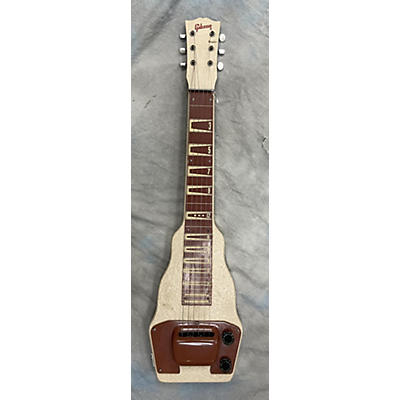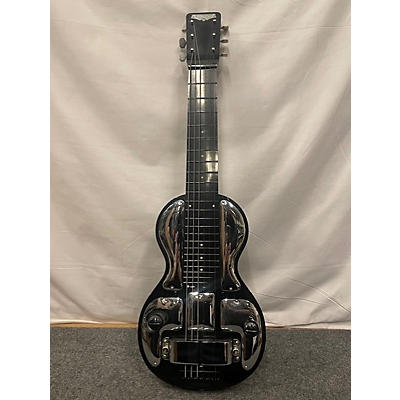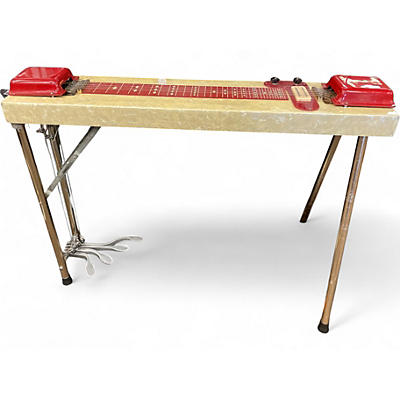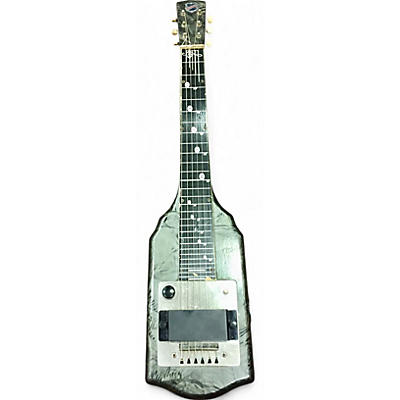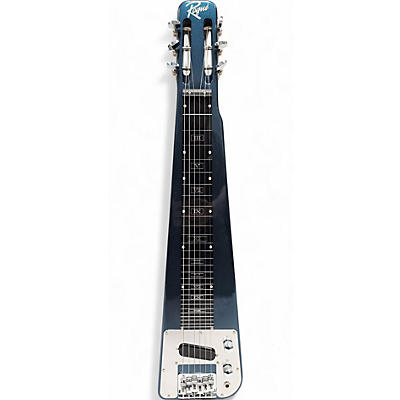About Steel Guitars
The signature sound of the traditional steel guitar is unmistakable. Steel guitars were originally developed in Hawaii in the late 1800s. The acoustic versions were known for years as “Hawaiian guitars.” They began to gain wider popularity following the Panama-Pacific Exposition of 1915, quickly being adopted in blues and country music. With these new musical genres, the name began to change. Since the guitar was played with a steel bar which was often simply called a “steel,” it began being referred to as a “steel guitar.”
The steel guitar has been adopted by many other genres over the decades. In addition to Hawaiian, bluegrass, country and blues music, steel guitars can also be heard in gospel, rock, avant-garde and Indian music, to name just a few of the many styles where they appear. Today’s steel guitars come from a wide range of makers, from Rogue and Recording King to Duesenberg and specialist builders like Asher. Musician's Friend has a wide variety of steel guitars to choose from.
Types of steel guitar
Acoustic
The very first guitars to be played in Hawaiian style were ordinary “Spanish-style” acoustic guitars. These guitars were usually played laying horizontally on the players lap, using a steel bar in the non-picking hand to “fret” the string. As Hawaiian music began to gain popularity players began to look for instruments that were easier to play in that position. They also needed more volume to compete with the rest of the band. Inventive luthiers began to develop solutions for both of these.
Weissenborn-style
In the early 1920s, Los Angeles luthier Hermann Weissenborn began developing a new style of guitar. These guitars, designed specifically for steel, featured many new concepts. These included raised action, a narrower bridge with a larger bridge plate, frets set flush with the fingerboard and a squared-off, hollow neck. Made of lightweight Koa wood, these instruments were not only louder, but had greater sustain and a tone that has been described as “haunting.” They also sat more comfortably on the player’s lap.
In the century since, many other luthiers have adopted these design elements. Contemporary Weissenborn-style steels are available from many builders, like Gold Tone and Asher, and at a wide range of prices points.
Resonator
A second option for a louder steel guitar became available in the late 1920s. Luthier John Dopyera and guitarist George Beauchamp developed a guitar that used three metal cones as mechanical amplifiers of the guitar’s sound. They founded the National String Instrument Company in 1927 to sell these “Tri-Cone” instruments. A year later, Dopyera left National to found the Dobro company with his brothers, with a new single-cone design that was even louder. These instruments were made in both square- and round-neck versions. The square-neck was suited to the lap-style player, and the round-neck was aimed at regular guitarists.
Today, many companies make resonator-style guitars. From entry-level instruments to high-end ones, companies like Rogue, Gretsch, Recording King, Beard and Dobro continue to produce both tri-cone and single-cone guitars for fans of the “high-lonesome hubcap.”
Electric
It’s arguable that the very first electric guitar was a lap steel. Specifically, when Adolph Rickenbacker introduced the Electro A-22 “frying pan” steel in 1931/32, it was the first guitar to boast a magnetic pickup. It wasn’t long before many other companies began to produce electric lap steels of their own.
Lap steels
From the smooth chord voicing and fluid solos of retro Western swing to the screaming lap steel solos on songs like “Running on Empty,” electric lap steels keep a hold on the musical imagination. Today, the most common electric lap steels are six-string models. These range from simple entry-level single-pickup instruments to muiti-pickup instruments with sculpted bodies and spectacular finishes. Eight- and ten-string versions are available as well, as specialty instruments that are used for more advanced country swing and jazz playing. These are generally special orders, and they are frequently made to the customer’s specification.
Pedal & Lap Steel Guitars are certainly interesting members of the guitar family. Known for their use in classic country, blue grass, Hawaiian, folk, rock, and blues music, these guitars produce an incredibly distinct tone thanks in part to their unique design and use of a metal bar that is often referred to as a tone or steel bar. These guitars are sure to add plenty of character to your performance, and no guitarist who demands versatility should be without one.
Recently, pedal and lap steel guitars have found a home in the burgeoning alt-country movement, with artists like Ryan Adams, Drive-By Truckers, and Wilco all adding these instruments to their live shows and studio recordings. Legends like BJ Cole, Hank Williams Sr., and Buck Owens also made ample use of pedal and lap steel guitars during their heyday. With fans and players that span genres and generations falling in love with these instruments, it's no wonder you're interested in having one of your very own.
Of course, there is the question of which pedal & lap steel guitars are going to be right for you. There is a great deal of variety available here, so, if you're not entirely sure where to begin, your best bet might be to check out some of our top-sellers. The RLS-1 Lap Steel Guitar with Stand and Gig Bag from Rogue, for example, is a great introductory "whinin' axe" that you'll love learning on. This guitar features a single-coil pickup and a hardwood body that makes it a joy to play. Best of all, it comes with legs and a gig bag, so you'll have no problem transporting your RLS-1 and setting up at any gig.
Another impressive instrument available here is the Electromatic Lap Steel Guitar from Gretsch. This lap steel is loaded with an unmistakably rich tone that shines through thanks to its chrome single-coil pickup. Giving off a distinctly vintage vibe, this guitar will add that extra special something to your recordings and live shows.
And these are only two of the options you'll find available here. Whether you're a first time buyer, or an old pro looking to add to your collection, we've got you covered. With a sought after sound that emotes perfectly, pedal & lap steel guitars will quickly find a home as part of your wide assortment of instruments.
Console steels
Less common than they were in the 1940s and 1950s, these steels, sometimes called “table steels” generally have multiple necks, used for multiple tunings and legs to support the larger body, rather than having the players hold them on their laps. Like the larger lap steels, these are special order items, so call us to talk about your needs if you’re interested in one.
Pedal steels
Sometime in the late 1930s, an enterprising steel guitarist named Alvino Rey, developed a system that used pedals to change tuning on individual strings. This enable easier chord changes and melody lines, something steel players had been doing with complicated slants of the steel and/or pulling the string behind the bar to change its pitch. The 1940 Gibson Electraharp was the first pedal steel guitar. Still a mainstay of traditional country, pedal steel has found its way into many other genres, but remains very much a niche instrument. Like the larger lap and console steels, pedal steels are special order items, so contact us if you’re looking for one and our call center associates will be glad to help you find the one that’s right.
The haunting sound of the steel guitar remains a favorite among many. Its versatility and adaptability to various musical styles seems endless. For many guitarists who start out dabbling with simple slide guitar licks on their regular acoustic or electric, the steel guitar in one of its many guises can become that instrument that they aspire to master.






































































































































